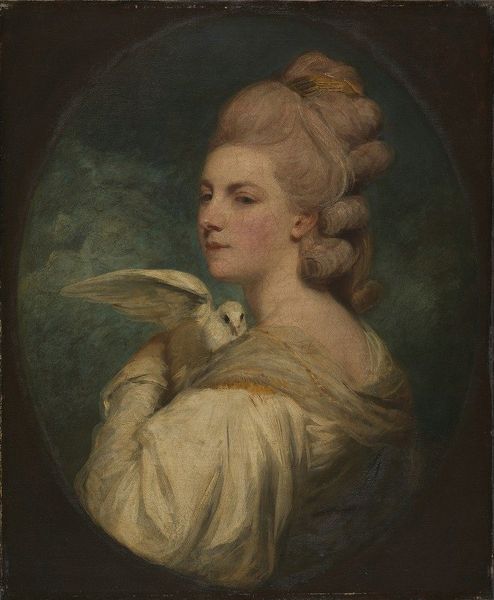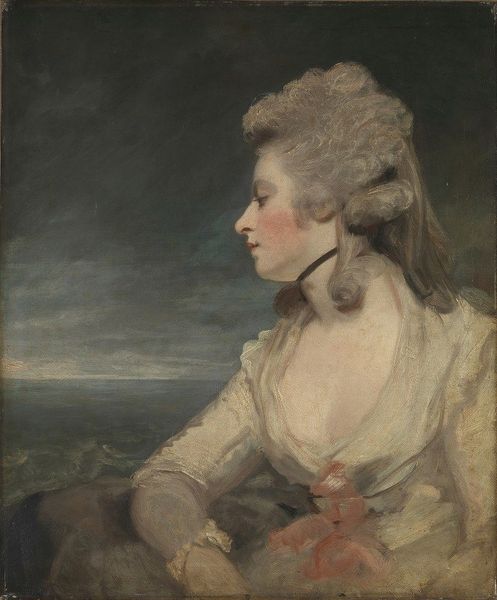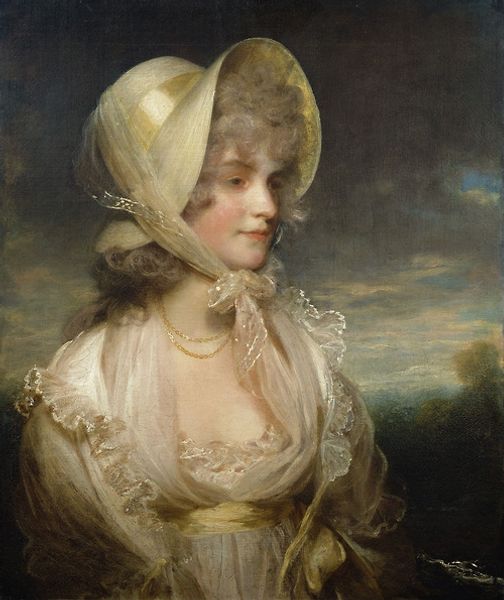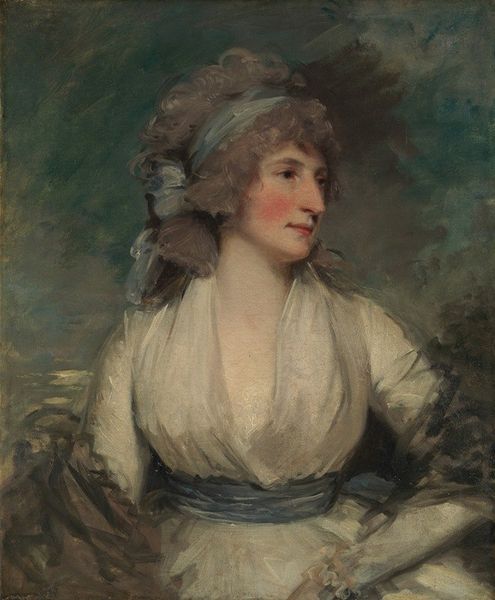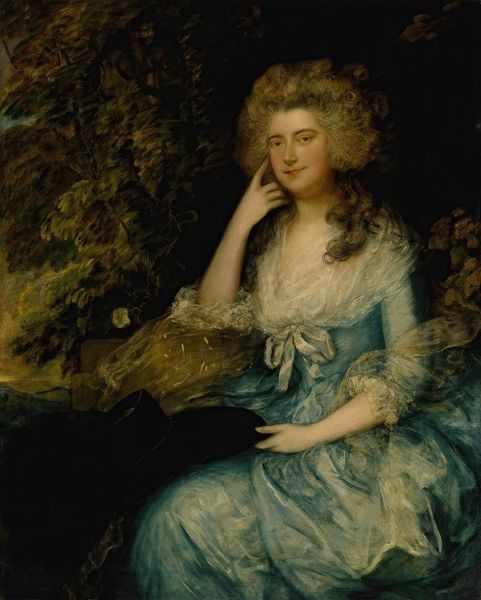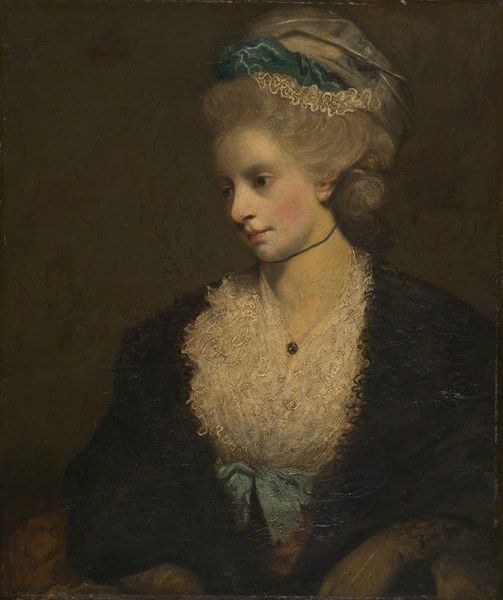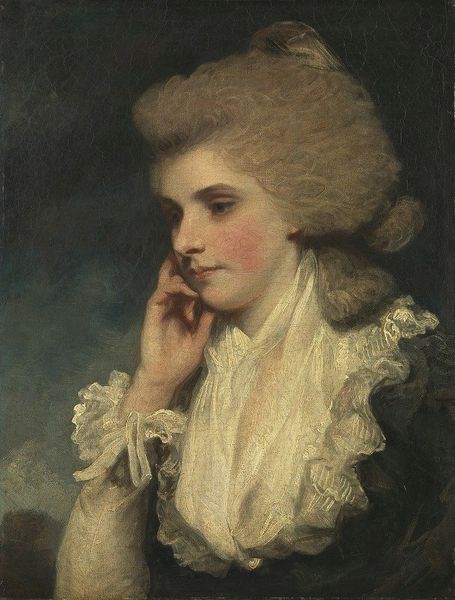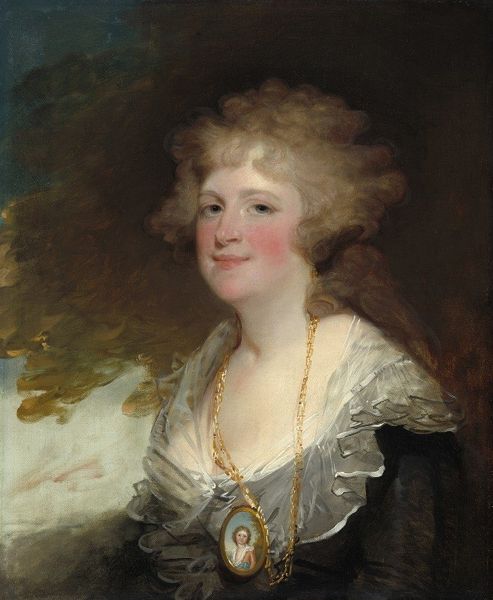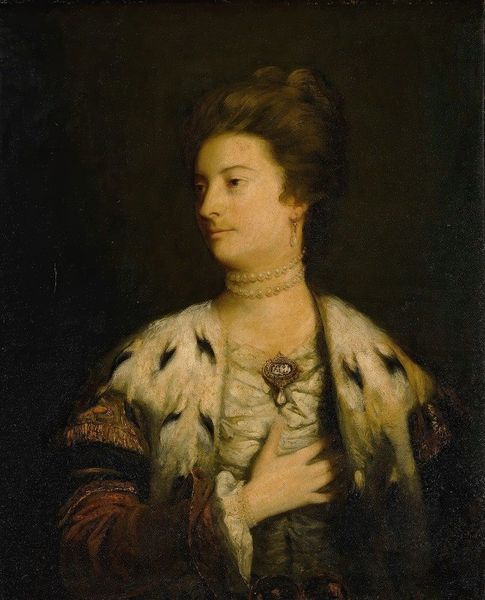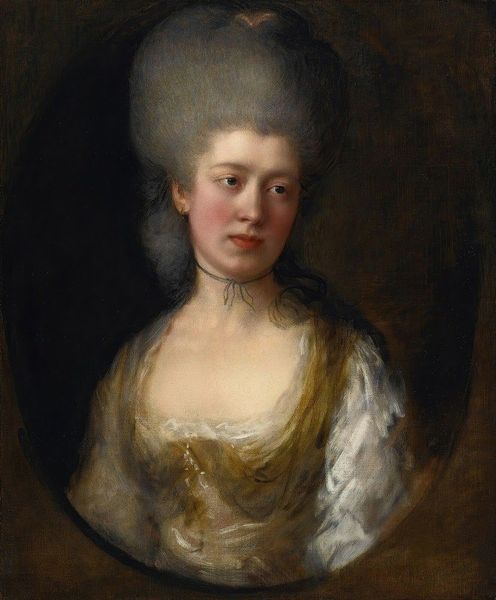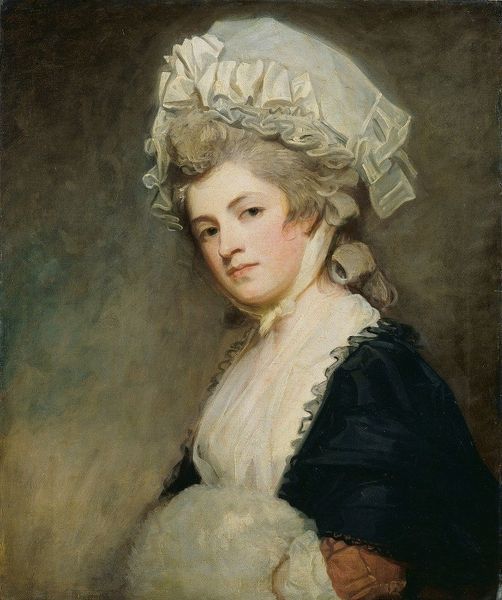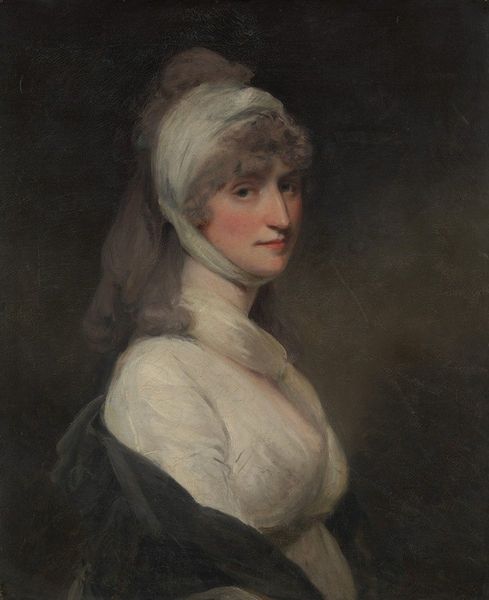
Copyright: Public Domain: Artvee
Editor: Here we have "Mrs Jane Braddyll," an oil painting created in 1788 by Joshua Reynolds. She looks so lost in thought. How do you interpret this work? Curator: As a materialist, I see much more than just a portrait of a woman lost in thought. Consider the very pigments Reynolds employed. Where did they source these materials? Who mined them, and under what conditions? This informs the subject’s status. Editor: I hadn't considered that! So, the cost of the materials speaks to her wealth? Curator: Exactly! And look at the labor involved in her dress. The lace, the tailoring, these speak to a whole industry dedicated to the wealthy. Think of the spinners, weavers, seamstresses – mostly women – working to create this image of luxury. Does the painting celebrate those workers? Editor: Not really. They're invisible, aren't they? Curator: Precisely! Reynolds presents the *effect* of all that labor, a seamless vision of aristocratic leisure. We can even see some degradation of the pigments on the face that speaks to time, improper mixing, and studio practices of the time. That affects how we view this portrait today. How do you see this work now? Editor: I see the inequalities embedded in its creation, things I didn't notice before. It's not just a pretty picture; it’s a record of social and economic forces. Curator: Indeed. And a reminder to always question whose story gets told, and who provides the materials to make it visible.
Comments
No comments
Be the first to comment and join the conversation on the ultimate creative platform.

